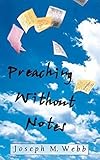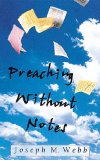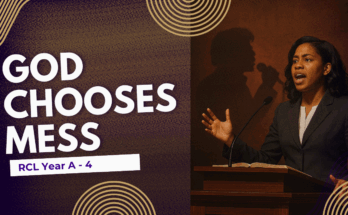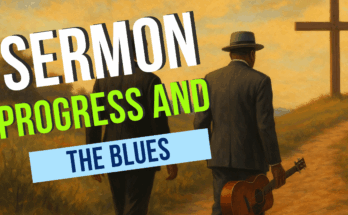As an Amazon Associate I earn from qualifying purchases.
Webb’s basic thesis is that the best preaching is done without notes. He then precedes to give an example of how he puts his sermons together week after week. Webb attempts to prove that preaching without notes is more valuable in general because it allows a greater connection to the audience and it frees the preacher to be passionate. Then after defending the approach, Webb describes the approach in a day by day approach.

Monday-Tuesday – Planning. During this time the preacher should determine what the text says and take extensive notes. He suggests a kind of extensive outlining. This is solely to determine what the text says. This is a pretty traditional component, and I would suggest other resources to fill in this component. For example, Paul Scott Wilson in “The Practice of Preaching provides a much more detailed approach to determine what the text says. Another approach is Brad Braxton in “Preaching Paul.†Braxton handles in outline form the steps to take in exegeting the passage. Both of these approaches do more than tell you to look at the passage, but tell you what you are looking for in the text.
Webb believes that the difference between preaching without notes and with notes is that this component should be more detailed. I think that Wilson or Braxton can help the preacher ask questions of the text which is an important component of preaching.
Wednesday: Create Outline: Here the preacher creates an initial outline and evaluates the outline. Also, the preacher gives a preliminary title to the message and creates a controlling metaphor. During this step, the preacher determines what the sermon is about and splits it up into what he calls “sequences†and others call “moves. Once again it is a very sketchy approach that might leave the preacher wondering what exactly to do. I would once again suggest adding either David Buttrick’s Homiletic which speaks extensively on how to create and evaluate “moves†or John McClure’s “Four Codes of Preaching†which also gives an evaluation method of moves or sequences. One can also look at Henry Mitchell’s student Frank Thomas in “They Like to Never Quit Praising God.
The controlling metaphor is an interesting sermonic device. As I look back at my own sermons, I have found that many of the more effective ones had a clear metaphor. I will attempt to always find one from now on. This is a metaphoric thread that ties the whole sermon together.
Thursday – Friday: Memorize Outline: Here the preacher memorizes the sequences. And also memorizes any data under each sequence that must be memorized. For example, one may have to memorize texts or stories for a particular sequence. Basically, you are to memorize what you need to know in each sequence. Then you are ready for preaching.
Preaching: During the preaching event, Webb pushes us to remember trust our memories and our preparation. He also suggests that the preacher not worry about forgotten sequences. Webb also reminds the preacher to be open to new things that the Spirit may give us in the pulpit as well as to interact with the audience.
I had some problems with the great method. I thought it was sketchy and that it only allowed for inductive sermons. I do not believe that inductive move based sermons are the only sermons to preach. Because of this, I wonder if this kind of preaching can become predictable over the long haul. While I am not sure that this has to happen, there will probably be a tendency to use common metaphors or common sayings, or other things may become predictable.
With those few issues however, I would encourage all to purchase this very good book.
Amazon and the Amazon logo are trademarks of Amazon.com, Inc, or its affiliates.







